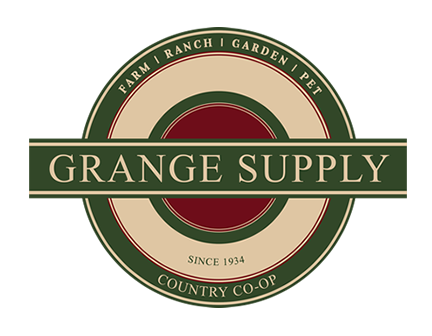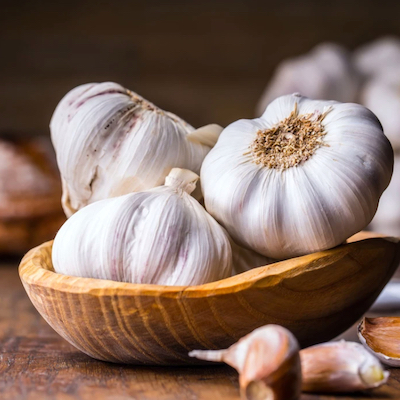
“You can never have enough garlic. With enough garlic, you can eat The New York Times.” – Morley Safer
Plan:
Garlic is best planted in late September to mid-October in our area. If you have property where the ground doesn’t freeze, you can continue to plant later into the fall.
How much do I need?
Each individual clove of garlic you plant will form a new bulb of cloves during the growing season. Every clove you plant will need 5-6” of space – 2.5-3” in every direction – so you can plan to plant 4-5 cloves per square foot (or 4-4.5 cloves per linear foot if you are doing rows 5-6 inches apart). Every bulb harvested will need to hang or be laid out flat to dry for a few weeks, so keep in mind the space you have for that part of the process as well.
Prepare:
Garlic grows well in loose, fertile soil. Amend soil with compost at planting time for best results.
Plant:
Plant the individual cloves root side down about three inches deep. Cover with soil and then cover the area with an aged woody mulch, straw or chopped up leaves.
Let’s talk fertilization (N-P-K)!
Bone Meal, Fish Bone Meal, Langbeinite, Azomite and Seabird Guano are fertilizers that can be added in the fall for phosphorus (P) and potassium (K) boosts. Fertilize again in spring when green shoots start to appear with a higher nitrogen (N) fertilizer.
Harvest:
As harvest time approaches in late summer, you will notice the leaves start to turn yellow. After you have seen a couple change color, withhold water to let the bulbs start to harden off and dry out. A couple weeks after that, they will be ready to lift out with a garden fork. Brush off as much soil as you can.
Cure:
Lay (or hang) the garlic in a dry place out of direct sunlight to cure. Check periodically and rotate as needed to prevent mold for about three weeks until they papery outsides are nice and dry. Then your bulbs should be ready to use and/or store.
Store:
Trim leaves and roots, and pack loosely in mesh bags or vented crates. Store at room temperature, or slightly cooler, in a well-ventilated location. Softneck varieties store for longer (6-12 months) than hardneck varieties (4-6 months).


